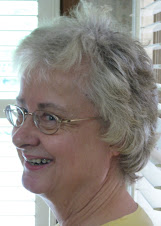Posted by Peg in South Carolina
In addition to the complexity of the treadling, there are other issues that slow down my weaving.
Another thing that happens is that throwing a shuttle will pull the loop from the other shuttle into the shot. So I have to check to see if this has happened. Sometimes the extra weft pulled in is visible, but mostly not.
The first image shows the loose hanging weft yarns. The second image shows the detail.
Just a bit of a mess there. No wonder weft gets caught up where it doesn’t belong.
The weft ends hang that way because I rest the shuttles on the fabric. There is no place for the weft emerging from the shuttle to go except to droop there at the edge of the fabric.
But if I were to place the shuttles on the bench by my side, there would be too much of the weft pulled out of the 
What I need to do is to get out the boards I made for shuttle rests and position them on the loom. That is exactly what I did. It definitely helped.
I still tug at the ends, but the ends are easier to get hold of. And I still need to tug at them, because one still does occasionally get caught up, but usually only barely.
This setup has made my weaving more relaxing and quicker……..well, relatively quicker! But the more relaxing did surprise me.
You can see how little of a mess there is any more.
The board I got from the waste pile at Lowe’s or Home Depot. Then I covered it with rug liner so that the shuttles would not slip. I attach it with a C-clamp. There is one on the right side of the loom as well.
Related Posts:
Weaving with Multiple Shuttles
Managing Multiple Shuttles
“Slowing Down the Weaving Still More” was written by Margaret Carpenter for Talking about Weaving and was originally posted on June 30, 2009. ©2009 Margaret Carpenter aka Peg in South Carolina






























